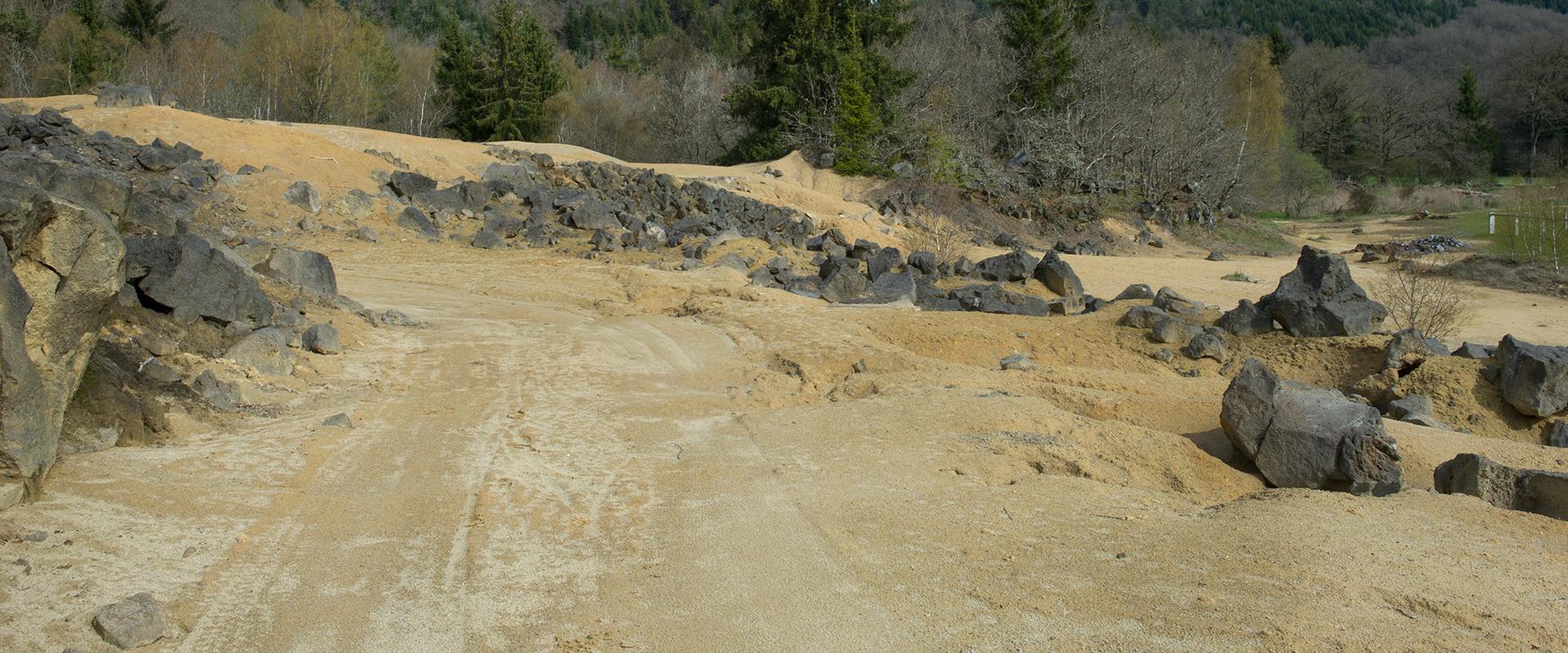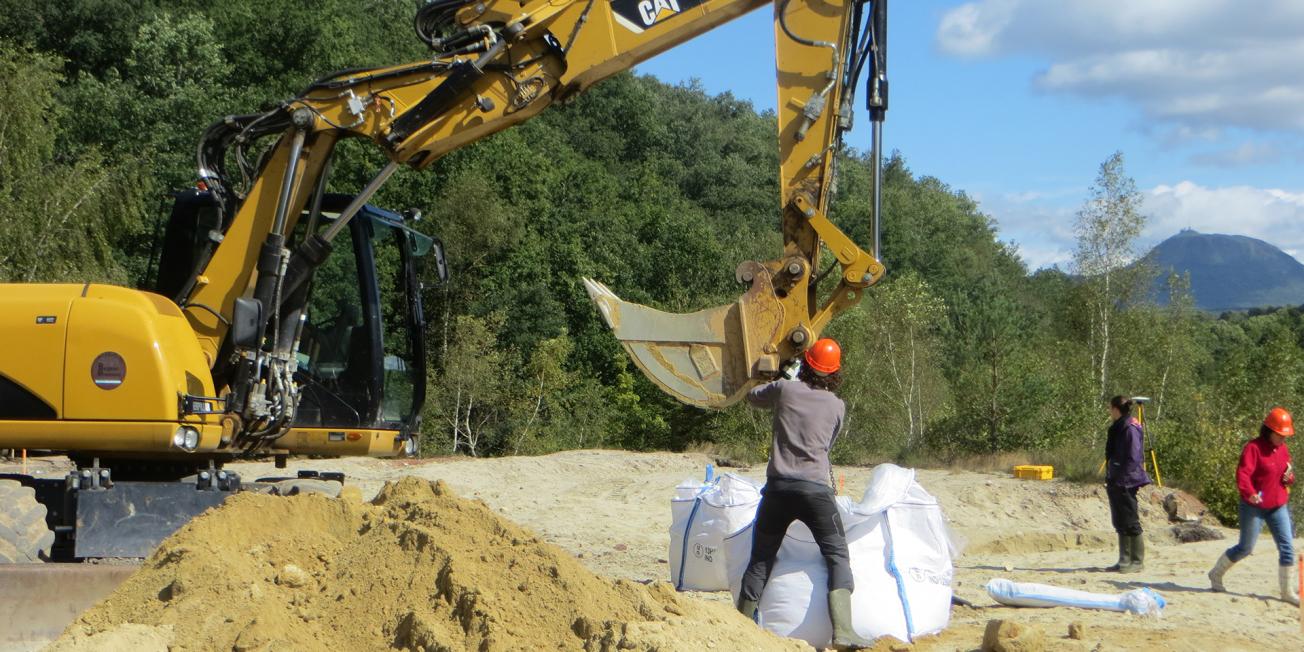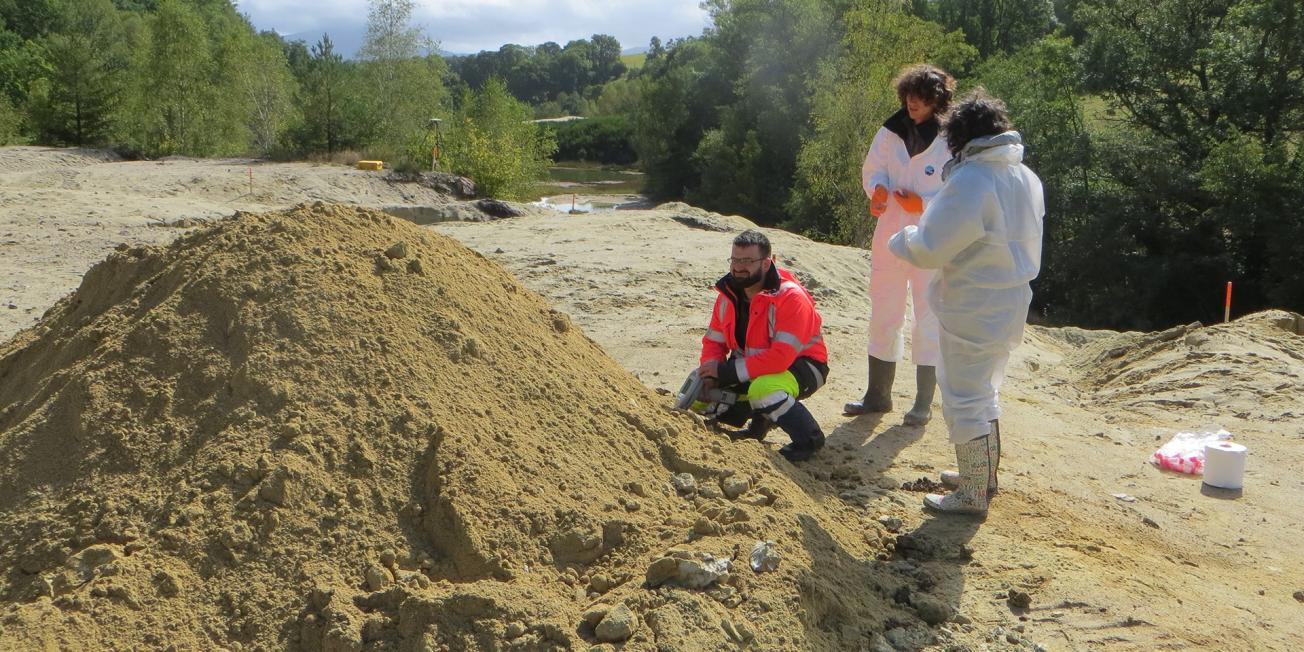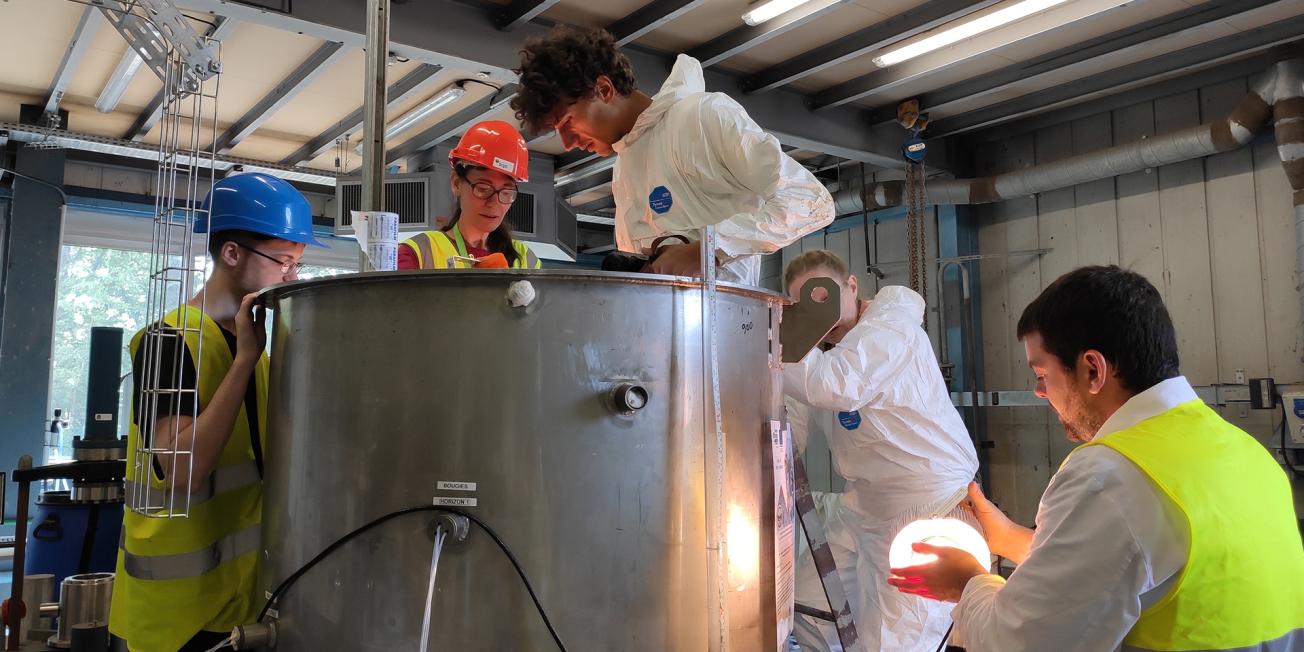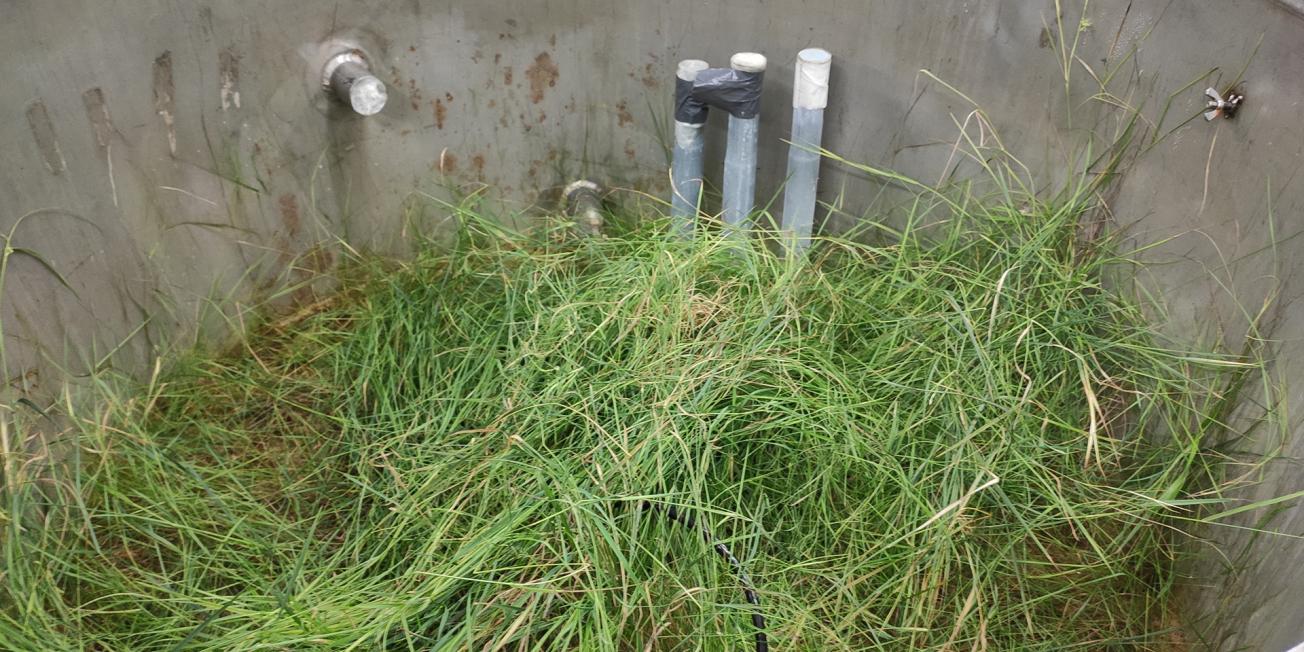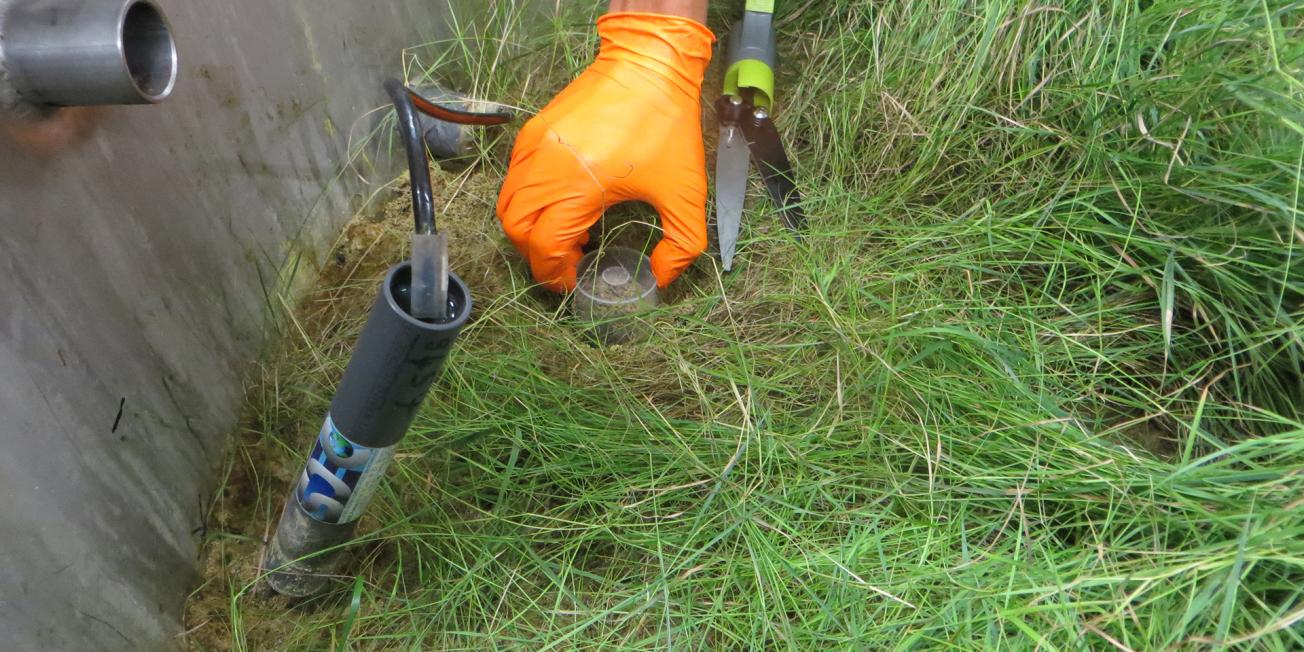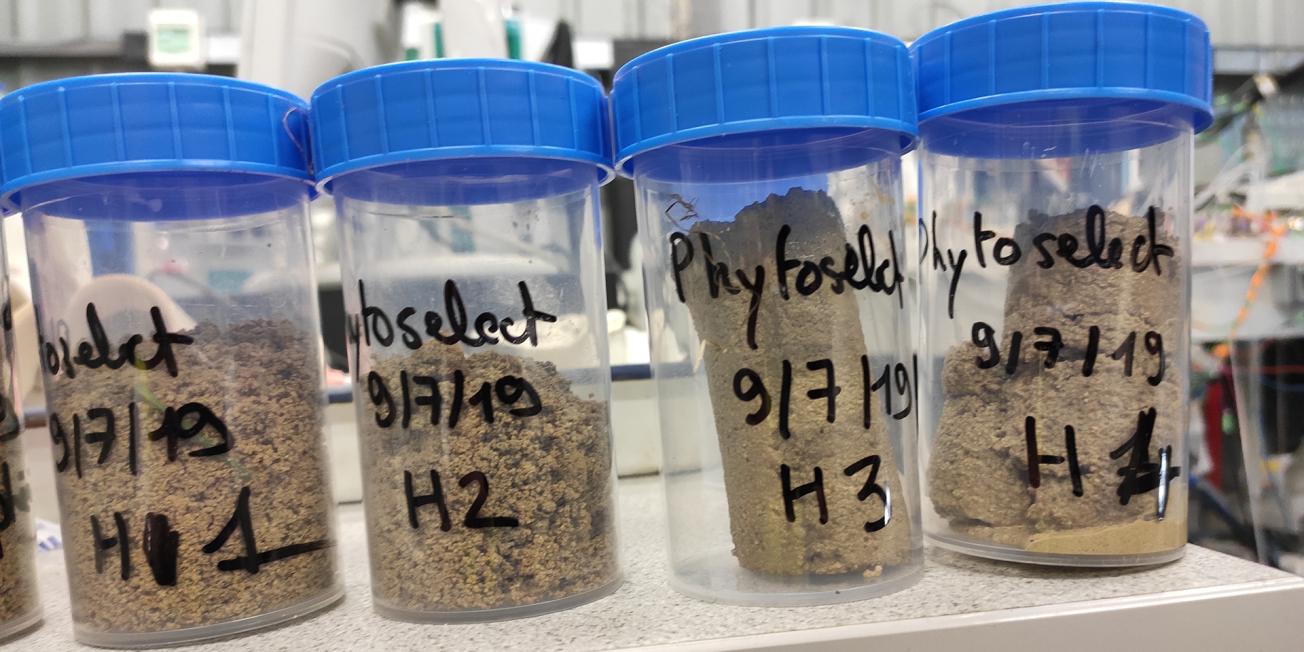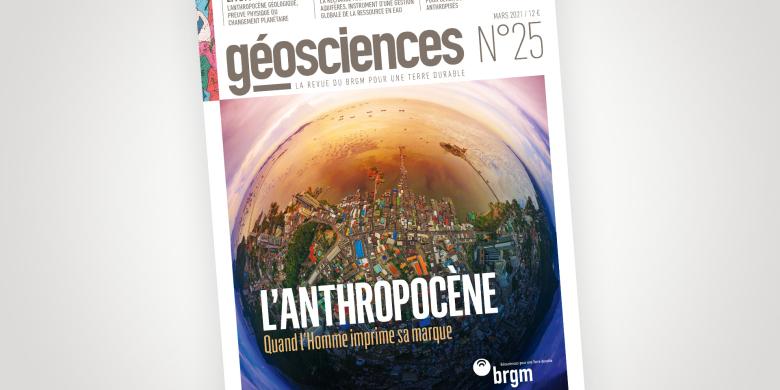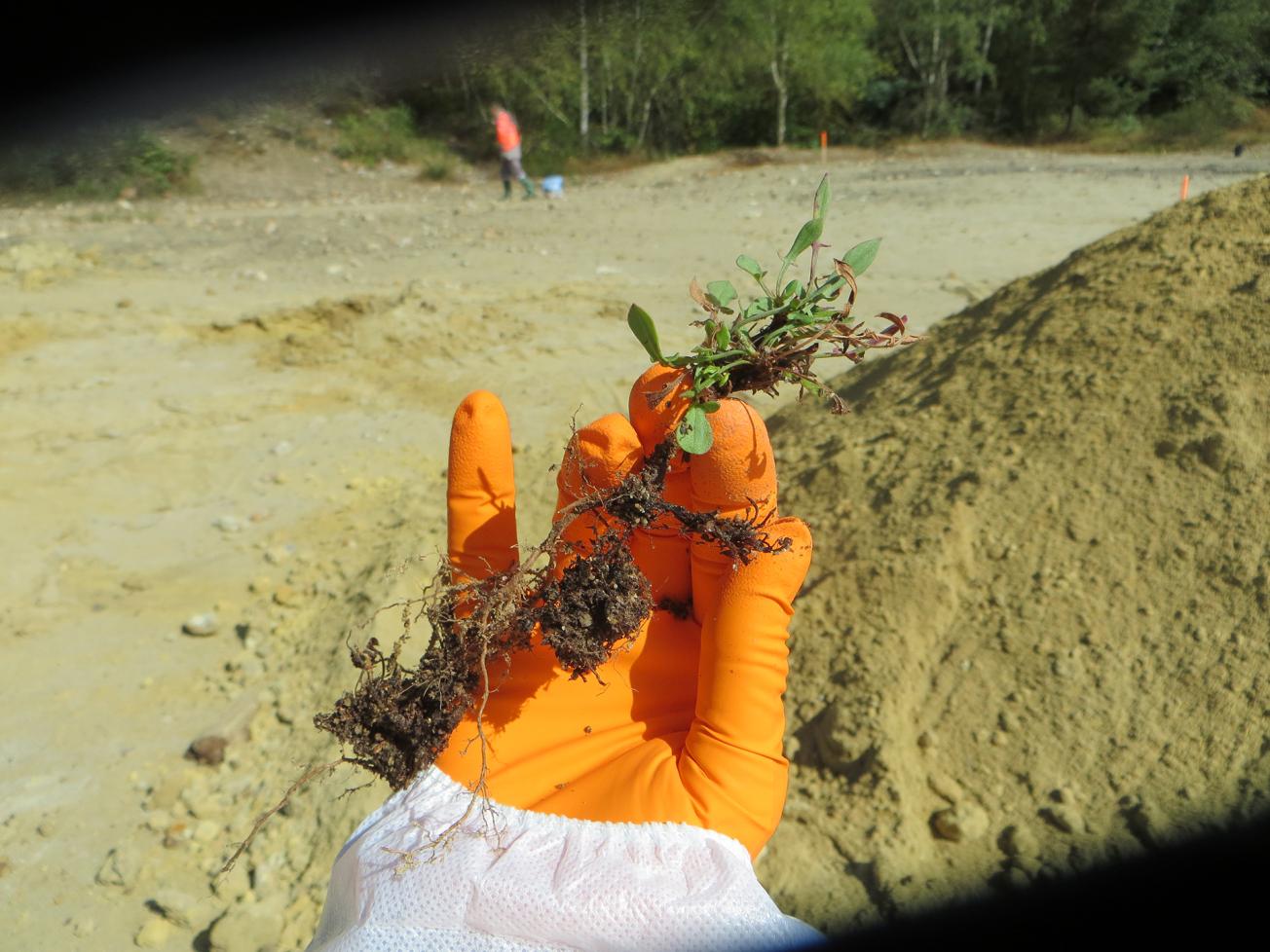
Assessing a plant that can survive the site conditions.
© BRGM
Field notebook extract published in the BRGM Géosciences journal No. 25: "The Anthropocene, the footprint of Humankind"
14 September 2017
"We are near the Puy de Dôme, on an old silver and lead mine. The site has been closed since 1947 but has left a significant amount of waste. During mining, most of the extracted rock, often crushed, is worthless and dumped on the site in the form of deposits that may contain toxic elements: lead, arsenic, antimony, etc. Outwardly, it just looks like a white sandy beach with gullies. Although this site may have been used for recreational purposes, it is not a natural or harmless site. On this “beach”, only a few scattered plants have managed to grow.
With my colleagues, for the first time we are going to test an original method for stabilising pollution and establish a model that can then be applied in similar sites, of which there are many (in France and worldwide). The technique involves using plants to stabilise pollution in mine deposits like this one, and preventing it from spreading elsewhere. The idea is to grow plants on the spoil: with their roots, they limit erosion, preventing polluted dust from blowing in the wind and being inhaled by walkers or carried away by rainwater runoff."
12 November 2017
"We are in the BRGM hall, in the PRIME and PLATINN laboratories. There is constant noise because materials are being ground in the next room to recover certain constituents or to recycle them. The PRIME platform, a laboratory dedicated to the study of polluted environments and the development of decontamination processes, has equipment that is unique in France. Among this equipment, we will use a device designed specifically for our research in the field of soil and subsoil microbiological processes: the mesocosm. It is a 1 m3tank, called the LABBIO, equipped with sampling and analysis systems. We are going to fill it with sandy mining waste recovered in Auvergne. »
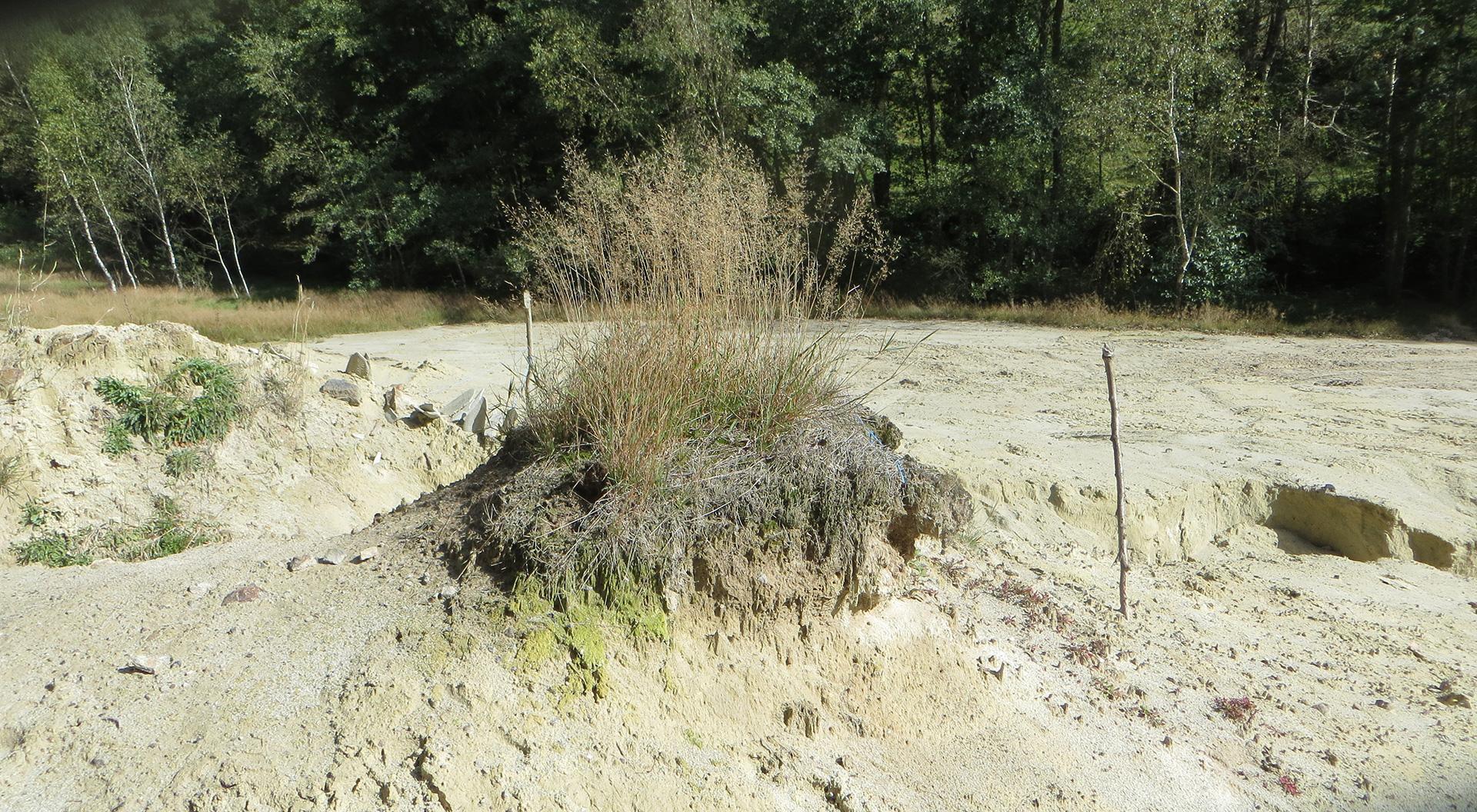
This experiment will provide us with valuable information: how do the quantities of water and pollutants circulating in the waste fluctuate? How does the microflora in the residue develop and can it change the behaviour of the pollutants?
16 August 2018
"The phytostabilisation trial really starts today. A layer of residue is taken from the surface of the tank and mixed with the soil conditioners, then we sow it with bentgrass. A bit of artificial rain and sunshine, and all you have to do is wait!"
8 November 2018
"The bentgrass has grown well, so well that it has reached the roof of the mesocosm. It is time to cut it. A pleasant surprise: the plants have invaded the mesocosm. Although the laboratory conditions are far from ideal for the grass (plants have much more light in natural conditions and probably less moisture), it is still growing beyond our expectations."
10 July 2019
"We have to stop the experiment, although the bentgrass was planted almost a year ago. We carefully remove the plants and the surface residue and we observe the area of the soil colonised by the roots. These have grown very well and have started to invade the residue layer below the conditioned surface. We will analyse and observe all the components of the system: residues, plants and micro-organisms."
October 2020
“More than a year after the end of the mesocosm experiment, this adventure is not completely over: we are still analysing samples and using the results for publication. In addition, our collection of plants that are resistant to lead, acidity and even the climate of Orleans (although different from that of the Auvergne mountains) and the micro-organisms adapted to their root system is ready for use in new research projects, in the laboratory, on platforms or in the field."
Phytoselect project
Géosciences journal No.25: the Anthropocene, the footprint of Humankind
The term “Anthropocene” was coined by climatologist Paul Crutzen at the beginning of the 2000s. It means that, for the first time since the birth of humanity, humankind has left such a strong impact on the planet that it could be considered as a geological force in and of itself, thus potentially forming a new geological era.
This edition of BRGM's Géosciences journal starts with the geological controversy as to whether the anthropocene era can be considered to be a new geological epoch, in an article by Colin Waters, a member of the stratigraphy committee. He then discusses humankind’s major impacts on the planet and how to correct them.
The issue also includes the interviews of François Gemenne, author of the Anthropocene atlas, and Jean Daniel Rinaudo, a sociologist-economist, specialising in water resources. A portfolio on the works on the Orleans grit chamber and a field notebook on soil depollution techniques recorded at the Prime experimental pilot facility, complete the edition.

